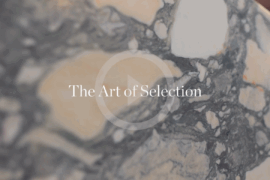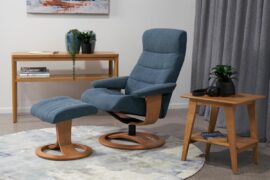The Ripple Hotel takes Hangzhou’s boutique hotel scene to the next level. Christie Lee writes.

July 13th, 2016
Located along the scenic Qiandao Lake in Hangzhou, Ripple Hotel is a collection of 12 duplex villas designed as a hotel for small families or couples seeking a leisurely weekend in Hangzhou.
While the architecture, conceived by German firm GMP, exhibits a strong Bauhaus design sensibility, the interiors, designed by Shanghai-based studio XL MUSE Architectural Design, pay homage to Hangzhou with its use of natural materials and colourful fabrics.
As the hotel’s name implies, Qiandao Lake – or rather the movement of its ripples – is a motif that threads through the various design elements.
The design team at XL MUSE says of the inspiration, “[We] want the hotel to appear like a microcosm of Hangzhou’s natural landscape. We want the grandeur of nature to be translated into the architectural space.”
At the reception hall, a boat hangs down from the ceiling. Carved from real wood, it doubles up as hotel reception desk and objet d’art. As your eyes are brought further up, the ceiling is weaved from throngs of thin bamboo. Oars act as a divider, providing guests with a moment of peace before they’re led to their rooms. All natural materials are locally sourced.
The well-crafted design creates an interesting contrast between the stark architectural lines and crafty furnishing.
Incorporating so much nature, so to speak, into the design is not without its challenges. “As bamboo is a natural material, prior treatment is needed to ensure that it is anti-corrosive and damp-proof,” the design team notes.
The above spatial arrangement is repeated in the individual hotel rooms. Interiors are vast, with separate and distinct spaces carved out for the dining, living and sleeping quarters, making it ideal for longer stays.
In the living room, the curved sofa is wrapped in bright hues, adding a splash of colour to the otherwise muted palette. The arc is also meant to mimic the moment “when a pebble is thrown into the water, causing ripples”.
Pendant lamps are made from bamboo hats, a nod to Hangzhou’s agricultural history. The floor-to-ceiling windows allow sunlight to flood in by day, and bring in views of the picturesque Qiandao Lake and surrounding landscape. This composition is brought indoors, too, with a branch, part of a vine or a dash of pebbles reimagined as paintings.
XL MUSE Architectural Design
xl-muse.com
INDESIGN is on instagram
Follow @indesignlive
A searchable and comprehensive guide for specifying leading products and their suppliers
Keep up to date with the latest and greatest from our industry BFF's!

CDK Stone’s Natasha Stengos takes us through its Alexandria Selection Centre, where stone choice becomes a sensory experience – from curated spaces, crafted details and a colour-organised selection floor.

London-based design duo Raw Edges have joined forces with Established & Sons and Tongue & Groove to introduce Wall to Wall – a hand-stained, “living collection” that transforms parquet flooring into a canvas of colour, pattern, and possibility.
The internet never sleeps! Here's the stuff you might have missed

Your main seating can be a stylish centrepiece, not just a functional chair.

CDK Stone’s Natasha Stengos takes us through its Alexandria Selection Centre, where stone choice becomes a sensory experience – from curated spaces, crafted details and a colour-organised selection floor.